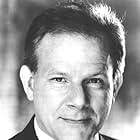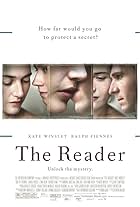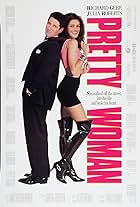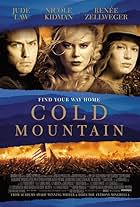The relationships of two couples become complicated and deceitful when the man from one couple meets the woman of the other.The relationships of two couples become complicated and deceitful when the man from one couple meets the woman of the other.The relationships of two couples become complicated and deceitful when the man from one couple meets the woman of the other.
- Nominated for 2 Oscars
- 22 wins & 50 nominations total
Steve Benham
- Car driver
- (uncredited)
Elizabeth Bower
- Chatty Exhibition Guest
- (uncredited)
Rene Costa
- Club Gangster
- (uncredited)
Ray Donn
- Customs Officer
- (uncredited)
Daniel Dresner
- Coughing Man
- (uncredited)
Rrenford Fitz-Junior Fagan
- Bus Passenger
- (uncredited)
Antony Gabriel
- Luke
- (uncredited)
Michael Haley
- Smoking Man
- (uncredited)
Steve Morphew
- Bartender
- (uncredited)
Abdul Popoola Pope
- Doctor
- (uncredited)
Jacqui-Lee Pryce
- Traveller
- (uncredited)
Peter Rnic
- Bodyguard
- (uncredited)
Storyline
Did you know
- TriviaClive Owen played the role of Dan in the original stage production.
- GoofsWhen Larry and Dan are talking in Larry's office you can clearly see the bed sheet in the bed behind Dan. When Larry walks to the bed it has no sheet and he pulls one out of the roll.
- Alternate versionsThere are two versions available. Runtimes are "1h 44m (104 min)" (general theatrical release) and "1h 38m (98 min) (TV) (Turkey)".
- SoundtracksThe Blower's Daughter
Written and Performed by Damien Rice
Under license to Vector Recordings, LLC/Warner Bros. Records Inc. and 14th Floor Records
By arrangement with Warner Strategic Marketing US and Warner Strategic Marketing UK
Featured review
I prefer when a movie is a movie. But when a movie is a very good play, we should be happy as well because there just aren't that many good things around.
This is a play, there's no mistaking. All the dynamics in it are seated in the words, all the motives in the four beings. There is no cinematic device used or necessary, except the revealing of the passport at the end, and I am sure that was handled differently in the stage version.
Mike Nichols makes a living out of taking constructions that work well on the stage and adding a few cinematic glosses so that the thing gives the impression it was born as a screen being. I find his tricks in this regard distracting, even a bit offensive because he hasn't adapted as the visual vocabulary has.
Never mind. Just eliminate the film components of its being and focus on the stage components and you still have something worthwhile, because here Nichols is still fresh.
You can read other folks to learn the story. It hardly matters. What matters to me is the clever, deep way the writer has constructed the thing. The visceral effect is from the panic and desperation of love. Nothing new there. What makes this effective, I think, are two things. Writerly things.
The first is that he hasn't just described the tippy balance of living in a romance. He hasn't just displayed the radical fuzziness and unpredictability of a world where that is all you know. He's made it the root of the story. This story has absolutely none of the logic to it that you expect when you see a love story. Everything seems real and natural after it has happened, but there's no way at all to predict what will happen next when you are in the thing. Its a great help in storytelling; you have to cling fast to what is happening. Its the best type of engagement, sucking you in by simply making you wonder, even worry about what is going to happen next. Its rare. Its good.
I'd like to point out how the four characters are constructed. A popular writing technique is to take one whole soul and break it into bits. Then the bits can get fleshed out imperfectly and interact so that the interaction has a being. In this case, start with a movie. What four pieces do you need? The writer (Dan), the photographer (Anna), the actor (Alice) and the director, the person concerned with the "skin" of the thing.
Its no accident, I think that it is impossible to settle on any one of these characters. You can go through this experience time and time again, each time tracing a different person's path, or the path of a relationship or even an urge.
This part is great too. Apart from Nichols' cinematic naivety, there's only one blot: Julia Roberts. She just doesn't understand what it means to be part of an assembly. She's not an actress in the real sense, the theatrical sense that Nichols knows how to sculpt. No wonder he wanted Cate Blanchett instead.
Ted's Evaluation -- 3 of 3: Worth watching.
This is a play, there's no mistaking. All the dynamics in it are seated in the words, all the motives in the four beings. There is no cinematic device used or necessary, except the revealing of the passport at the end, and I am sure that was handled differently in the stage version.
Mike Nichols makes a living out of taking constructions that work well on the stage and adding a few cinematic glosses so that the thing gives the impression it was born as a screen being. I find his tricks in this regard distracting, even a bit offensive because he hasn't adapted as the visual vocabulary has.
Never mind. Just eliminate the film components of its being and focus on the stage components and you still have something worthwhile, because here Nichols is still fresh.
You can read other folks to learn the story. It hardly matters. What matters to me is the clever, deep way the writer has constructed the thing. The visceral effect is from the panic and desperation of love. Nothing new there. What makes this effective, I think, are two things. Writerly things.
The first is that he hasn't just described the tippy balance of living in a romance. He hasn't just displayed the radical fuzziness and unpredictability of a world where that is all you know. He's made it the root of the story. This story has absolutely none of the logic to it that you expect when you see a love story. Everything seems real and natural after it has happened, but there's no way at all to predict what will happen next when you are in the thing. Its a great help in storytelling; you have to cling fast to what is happening. Its the best type of engagement, sucking you in by simply making you wonder, even worry about what is going to happen next. Its rare. Its good.
I'd like to point out how the four characters are constructed. A popular writing technique is to take one whole soul and break it into bits. Then the bits can get fleshed out imperfectly and interact so that the interaction has a being. In this case, start with a movie. What four pieces do you need? The writer (Dan), the photographer (Anna), the actor (Alice) and the director, the person concerned with the "skin" of the thing.
Its no accident, I think that it is impossible to settle on any one of these characters. You can go through this experience time and time again, each time tracing a different person's path, or the path of a relationship or even an urge.
This part is great too. Apart from Nichols' cinematic naivety, there's only one blot: Julia Roberts. She just doesn't understand what it means to be part of an assembly. She's not an actress in the real sense, the theatrical sense that Nichols knows how to sculpt. No wonder he wanted Cate Blanchett instead.
Ted's Evaluation -- 3 of 3: Worth watching.
Details
- Release date
- Countries of origin
- Official site
- Language
- Also known as
- Closer. Llevados por el deseo
- Filming locations
- Postman's Park, Little Britain, London, England, UK(park with Alice Ayres tablet)
- Production companies
- See more company credits at IMDbPro
Box office
- Budget
- $27,000,000 (estimated)
- Gross US & Canada
- $33,987,757
- Opening weekend US & Canada
- $7,707,972
- Dec 5, 2004
- Gross worldwide
- $115,518,219
- Runtime1 hour 44 minutes
- Color
- Sound mix
- Aspect ratio
- 1.85 : 1
Contribute to this page
Suggest an edit or add missing content






































